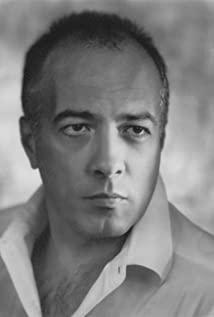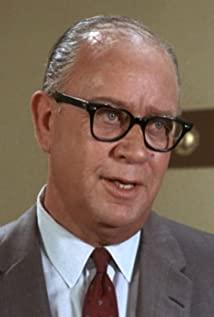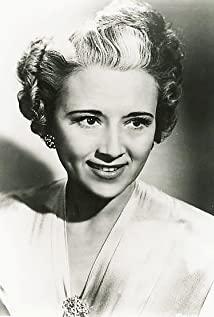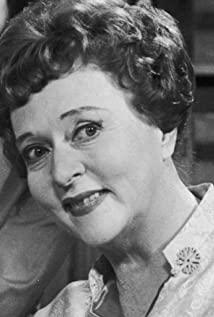North by Northwest is a 1959 film by Hitchcock. The film tells the story of Roger, an advertising businessman who is mistaken for Kaplan in crisis, and he searches for Kaplan until he finally finds the truth and is rescued. In "North by Northwest", Fandan and others as opposing forces have always existed. The narrative from the beginning of the film is based on the contradiction between Roger and Fandan. Through multiple reversals and exciting pursuits, the artistic expression of the entire film has been greatly enriched.
1. Desire
Usually the important feature that drives the narrative is desire, the goal is formed by the desire, and the development process of the narrative includes the process of achieving the goal. From the very beginning of the film in "North by Northwest", the hero Roger was mistaken for George Kaplan and was kidnapped by a gang and planned to kill him in an attempt to cause a car crash and an accident, and then he was lucky survived. Immediately after calling the police, but the police and everyone did not believe him, so he was afraid to find Kaplan's whereabouts while avoiding pursuit. The film is narrated from this desire, and it becomes a story of finding Kaplan. The reason why the film is narrated is that Roger wants to find Kaplan and prove his innocence. And just when he followed the clues to find "Kaplan", he learned that this person was not the Kaplan he was looking for. At the same time as he learned the news, Kaplan was assassinated, and the murderer was naturally blamed on the station. Roger next to Kaplan. Roger, who was wanted by the police, embarked on a train journey to avoid pursuit and find Kaplan.
On the train, Roger met Kendall, a woman who fell in love at first sight, and the two fell in love. He followed the clues provided by Kendall to find Kaplan, but he did not expect another conspiracy, and he almost lost his life. After escaping, Roger arrived at the appointed place and did not see Kaplan, but saw Kendall. Miss. Following Kendall's trail, he finally found that Kendall was with Vandan, the man who wanted to hunt him down. Roger, who was taken away by the police after getting rid of the persecution, was told by the intelligence agent that Kaplan did not actually exist, and that Kendall was just an undercover agent to help them catch criminals. Roger, who only knew the truth at this time, changed his desire to find Kaplan to save his beloved Kendall. Until the end of the film, the whole process of completing the desire is also expressed in the happy ending of successfully rescuing and capturing the criminal.
2. Objectification
Objectification means presenting a basic objective story on which the characters' "perceptual subjectivity" and "psychological subjectivity" viewpoints are interspersed. Therefore, classic narrative films usually use unrestricted narrative techniques. Since Roger was mistaken for Kaplan, the audience naturally stood on Roger's side from an objective point of view, thinking that he was indeed not Kaplan, and witnessed the whole process of being threatened, but neither the police nor the mother believed it. He, only the audience knows the truth, and only the audience's choice is to believe him. In the process of being wanted by the police, a shot is inserted where the intelligence agent shows that there is no Kaplan person, the audience is informed of this information, and Roger is still kept in the dark. There is a scene where the intelligence officer and Roger are talking at the airport. The voice of their conversation is clearly heard by the audience at first, until the plane takes off and makes a huge rumble, and the audience can only see the two talking in the camera. , but could not know the content of their conversation until the voice slowly disappeared, and the audience could slowly hear their conversation again. This shot further confirms that the audience is an objectified existence.
When they met Miss Kendall on the train, at first the audience thought the same as Roger, thinking that she was just an ordinary woman who fell in love with him at first sight. Then there was a reversal. She handed out a note, and the audience learned that Kendall was actually the character who was sent to deal with Roger. The purpose and motive were not simple, and at this time Roger did not know it until the farm was staged. In the plot of the plane chasing people, after Roger escaped here successfully, he learned that Kendall and Vandan belonged to the faction, and the information the audience learned here was consistent with Roger. It wasn't until the intelligence agent told Roger that the audience and Roger learned at the same time that Kendall was actually the one who helped the intelligence agent. Here is another reversal. Kendall actually loves him, which led to Roger's death. The plot to rescue Kendall. The audience knows the truth from beginning to end, but as the plot progresses, the audience learns more and more information.
3. Closed ending
Most classic narrative films present a closed ending, leaving no questions unanswered, looking for a final outcome to complete the chain of cause and effect. The audience usually knows the fate of each character, the answer to each secret, and the outcome of the conflict. It is more obvious in suspense films. The film usually sets a suspense at the beginning and uses the whole film as a foreshadowing. It is not until the last moment of the film that the truth of the facts is revealed to the audience, which makes the audience feel suddenly enlightened. . The film begins to enter the climax after the intelligence officer informs Roger of the truth. The pace of the film is accelerated. The rescue process begins when Roger escapes from the hospital by jumping over the wall. On the one hand, the audience is worried about Roger's personal safety, and on the other hand, he is afraid that Roger will be beaten by Vatican. Dan finds that a sense of crisis hangs over the film. From Roger's decision to save the heroine, at this time the audience learned that there must be an explanation for this matter.
Roger peeked outside the window after Vandana found Kendall's betrayal and decided to dispose of her as the plane crossed the sea. out of the room. Afterwards, when Roger threw the matchbox in front of Kendall, it was also heart-wrenching when Fandan's people saw it. Fortunately, he just threw the matchbox away and found nothing unusual. After they left, the nanny found Roger in the mirror, and also made the audience pray secretly for Roger. Just before they were about to get on the plane, gunshots rang out, Roger escaped, and the one he used The gun happened to be Kendall's fake gun. Including the subsequent chase on the giant head, the danger of the external environment and the tension between the hostile parties pushed the film to a climax. Just when the audience thought there was no hope for Roger and Kendall, the police arrived and they were rescued. The climax of the film makes people nervous, and every shot makes people nervous. It describes the final scene in a specific and detailed way to the audience, and explains the final result.
View more about North by Northwest reviews











